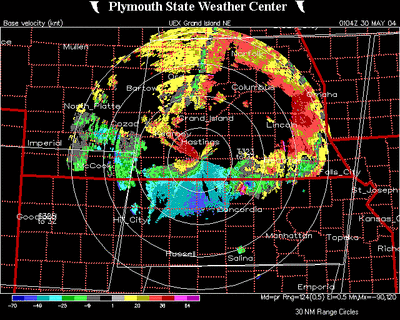Pilots gain renewed confidence in their ability to make the
right decisions before every flight
 Chesapeake Aviation Training, of
Baltimore, Maryland, has announced the next locations for their
highly-regarded two-day weather seminars for pilots. These
two-day weather-based safety seminars entitled "Weather or
Not" introduce pilots to many aspects of weather planning not
taught in traditional aviation training.
Chesapeake Aviation Training, of
Baltimore, Maryland, has announced the next locations for their
highly-regarded two-day weather seminars for pilots. These
two-day weather-based safety seminars entitled "Weather or
Not" introduce pilots to many aspects of weather planning not
taught in traditional aviation training.
"Pilots need to balance their desire to fly with their need to
minimize exposure to hazardous weather such as icing, thunderstorms
and fog, " says CAT's Scott Dennstaedt, who has designed
the "Weather or Not" seminars for that very purpose. He hopes
that pilots will walk away from these seminars with a renewed
confidence in their ability to make a well-informed judgment before
every flight.
Meteorologists are also hungry for PIREPs
Pilots truly need those hard-to-come-by reports, better known as
PIREPs, especially when the conditions along their planned route
are marginal. Are pilots reporting ice? What severity? Are there
reports of any severe turbulence? Where are the cloud tops?
However, pilots are not the only ones hungry for PIREPs.

Meteorologists use PIREPs when they construct or amend area
forecasts (FAs) and terminal aerodrome forecasts (TAFs). An urgent
PIREP (UUA) of severe icing or severe turbulence may trigger the
Aviation Weather Center (AWC) to convert an existing AIRMET into a
SIGMET, based solely on the conditions reported by a single pilot.
Additionally, a PIREP may extend an AIRMET or SIGMET in both time
and area. Keep in mind that the AWC is not only looking for adverse
weather PIREPs; they also welcome PIREPs indicating severe clear
conditions especially in areas in close proximity to adverse
weather.
The AWC treats every PIREP seriously. Pilots become the eyes and
ears of the meteorologists that are working hard to provide other
pilots with the safest flight environment. Yes, even a pilot's ears
provided a valuable piece of information to the meteorologist at
the AWC. This past winter, during some snow squalls in New England,
a Cessna pilot reported hearing thunder after landing. The pilot
filed a report and this immediately prompted the meteorologist at
the AWC to amend the area forecast (FA) to include -TSRA with CB
TOP FL200.

Seminar Covers In-Depth Weather Information Not Otherwise
Available
The weekend-long seminar dissects two familiar weather products
and introduces several weather products that are extremely useful,
but may not be familiar to most pilots. The featured segments teach
pilots how to understand and make practical use of:
- NEXRAD images
- Terminal Aerodrome Forecasts (TAFs)
- Tools to assess atmospheric instability
- Weather forecasting models for short- and long-range
planning.

In addition to the topics above, there will be plenty of time
available for an interactive discussion about all facets of weather
planning.
Seminar Dates and Costs
Chesapeake Aviation Training is holding the "Weather or Not"
weekend-long seminar in the following locations:
- Oxford, CT (KOXC) on September 18th - September 19th, 2004
- Birmingham, AL (KBHM) on October 9th - October 10th, 2004.
The price of the two-day seminar is $350. Student pilots holding
a valid student pilot's certificate and FAA-certified flight
instructors can receive a discounted price of $250. The price above
includes lunch on Saturday and Sunday and a free CD containing the
presentation slides.
Chesapeake Aviation Training was founded in 2001. It is a
privately held firm headquartered in Baltimore, Maryland.
 A Crazy Tesla Flying Car is Coming
A Crazy Tesla Flying Car is Coming ANN's Daily Aero-Term (11.xx.25): NonApproach Control Tower
ANN's Daily Aero-Term (11.xx.25): NonApproach Control Tower Aero-News: Quote of the Day (11.01.25)
Aero-News: Quote of the Day (11.01.25) ANN's Daily Aero-Linx (11.01.25)
ANN's Daily Aero-Linx (11.01.25) Classic Aero-TV: EAA Introduces Angle of Attack Training
Classic Aero-TV: EAA Introduces Angle of Attack Training






